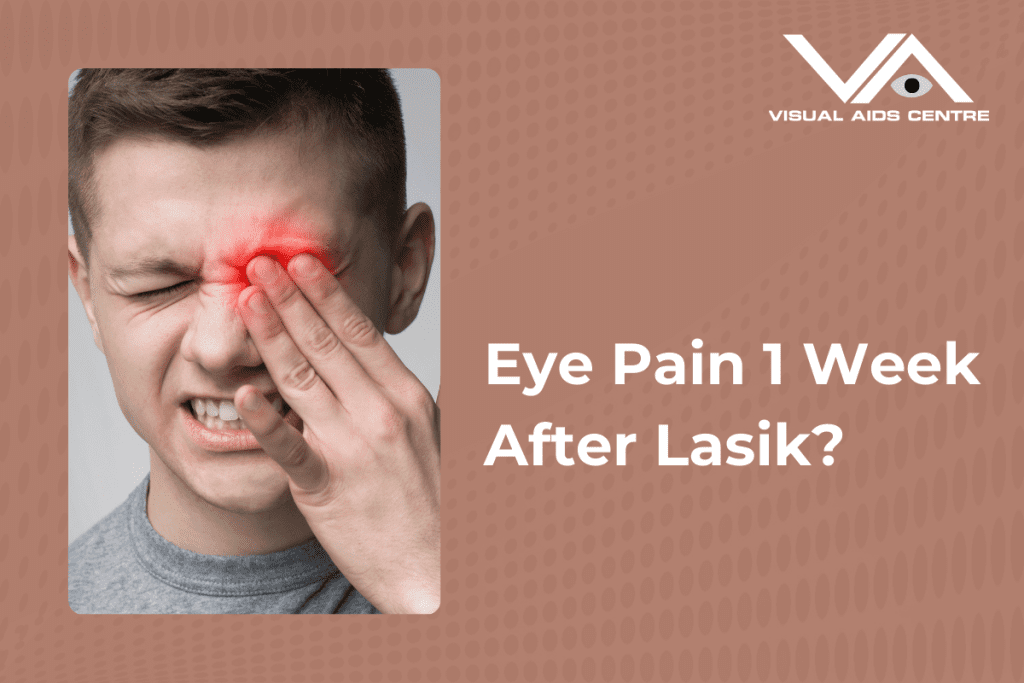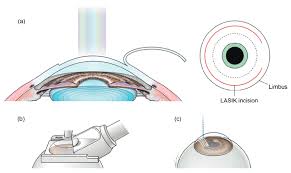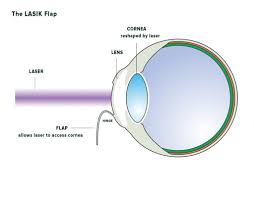Table of Contents
ToggleExperiencing eye pain after undergoing LASIK (Laser-Assisted In Situ Keratomileusis) surgery is not entirely uncommon, but it can be unsettling, especially a week after the procedure.
LASIK has revolutionized the field of refractive surgery, offering millions the prospect of life without glasses or contacts.
However, like any surgical procedure, there are post-operative symptoms and potential side effects that patients may experience.
This blog post aims to shed light on why some individuals might feel eye pain one week after LASIK, what it could potentially signify, and practical steps to manage this discomfort.

Why Am I Experiencing Eye Pain After LASIK?
It is essential for LASIK patients, eye care professionals, and health enthusiasts to understand that each person’s recovery experience post-LASIK surgery can vary significantly.
During the first week after LASIK, it is normal to experience varying degrees of discomfort and symptoms, including dry eyes, light sensitivity, mild irritation, and sometimes pain.
Here are several reasons you might experience eye pain one-week post-surgery:
Healing Process
Following LASIK surgery, the cornea begins the healing process. This natural process may lead to sensations of discomfort and pain as the nerves start to regenerate. LASIK involves creating a thin flap in the cornea, and during the healing phase, you may experience pain due to the corneal tissue repairing itself.
Dry Eyes
Dry eyes are one of the most common side effects after undergoing LASIK surgery. When the corneal nerves are disrupted during the procedure, it can reduce tear production, leading to dryness and resulting in pain or discomfort.
While this condition generally improves within a few weeks or months, it can contribute to pain shortly after the procedure.
Light Sensitivity
Your eyes might be more sensitive to light after LASIK, which can cause discomfort, especially in bright environments.
Infection or Inflammation
Though rare, it is possible to develop an infection or inflammation post-LASIK, which can cause eye pain. If the pain is accompanied by redness, increased sensitivity to light, or vision changes, it is crucial to contact your eye care professional immediately, as these could be signs of a more severe issue requiring prompt treatment.
Improper Eye Care
Not following your doctor’s post-operative instructions, such as accidentally rubbing your eyes, can irritate the healing cornea and cause pain.
How Long Does Eye Pain Typically Last?
After LASIK, most patients encounter varying degrees of eye pain and discomfort, typically peaking immediately after the procedure. This initial discomfort usually diminishes within the first few hours.
However, a lingering sensation of low-grade burning or dryness may persist for a week or two. By the end of the first week, this discomfort should notably decrease.
Should the pain persist or worsen beyond this timeframe, it’s imperative to promptly reach out to your ophthalmologist for evaluation and guidance.
The Importance of Time and Communication
Here are some important points to remember:
Patience is Key
Healing after LASIK takes time.
While some patients may notice significant improvement within a day or two, others may require a week or even longer for their vision to stabilise and discomfort to diminish.
Open Communication with Your Doctor
If you’re experiencing severe or worsening pain, or if you notice additional symptoms such as redness, discharge, or blurred vision, don’t hesitate to contact your ophthalmologist (eye surgeon).
Prompt communication allows for early intervention, which can help prevent complications and ensure optimal healing.
Soothing the Discomfort: Treatment Options
If you’re experiencing eye pain a week after LASIK, there are several approaches to alleviate your discomfort and promote healing. Here are actionable strategies:
Artificial Tears
For those suffering from dry eyes, artificial tears can provide significant relief. These over-the-counter lubricating eye drops can help moisten the eyes and reduce feelings of dryness and discomfort. Your doctor may recommend specific brands or types that are best suited for LASIK patients.
Anti-inflammatory Medication
Your doctor might prescribe anti-inflammatory eye drops or medication to reduce post-surgical inflammation and discomfort in certain cases.
Pain Relievers
Over-the-counter pain relievers like acetaminophen could be advised for managing moderate pain. However, it’s important to seek guidance from your doctor before taking any medication.
Beyond Medication: Self-Care Strategies for a Speedy Recovery
Follow Your Doctor’s Post-Op Care Instructions
Adhering to the aftercare plan prescribed by your eye surgeon is paramount. This includes using prescribed eye drops to prevent infection and inflammation and attending follow-up appointments to monitor your healing progress.
Protect Your Eyes
In the week following your surgery, it’s important to protect your eyes from potential irritants that could exacerbate pain. Shield your eyes from bright lights and harmful UV rays by wearing sunglasses.
Additionally, avoid rubbing your eyes, as this can irritate the healing corneal tissue and increase the risk of complications.
Rest and Hydrate
Ensuring adequate rest and hydration is beneficial for overall recovery. Sleep helps the body heal more efficiently while staying hydrated can aid in maintaining sufficient moisture levels in the eyes.
When to Seek Immediate Medical Attention
Certain circumstances following LASIK surgery necessitate prompt attention from your ophthalmologist:
- Severe or escalating pain: If the pain worsens or persists beyond a few days, it’s crucial to contact your doctor.
- Vision alterations: Any abrupt or significant changes in vision, such as blurriness, double vision, or vision loss, warrant immediate medical assessment.
- Heightened redness or swelling: Excessive redness or swelling around the eyes could indicate infection and require prompt attention.
- Sensitivity to light: While some light sensitivity is anticipated, if it exacerbates or becomes intolerable, consulting your doctor is advised.
- Eye discharge: Pus or thick discharge from the eyes signifies infection and mandates urgent medical evaluation.
A Brighter Future Awaits
Feeling eye pain one week after LASIK can be concerning, but in many cases, it is a temporary and manageable symptom as your eyes heal. Understanding the possible causes and how to effectively address them can significantly improve your comfort and recovery experience. Nonetheless, never hesitate to reach out to your eye care provider with any concerns post-surgery.
Remember, successful LASIK recovery is not just about the surgery itself but also about how aftercare is managed. With proper care and precautions, you can look forward to enjoying the benefits of clearer vision.













